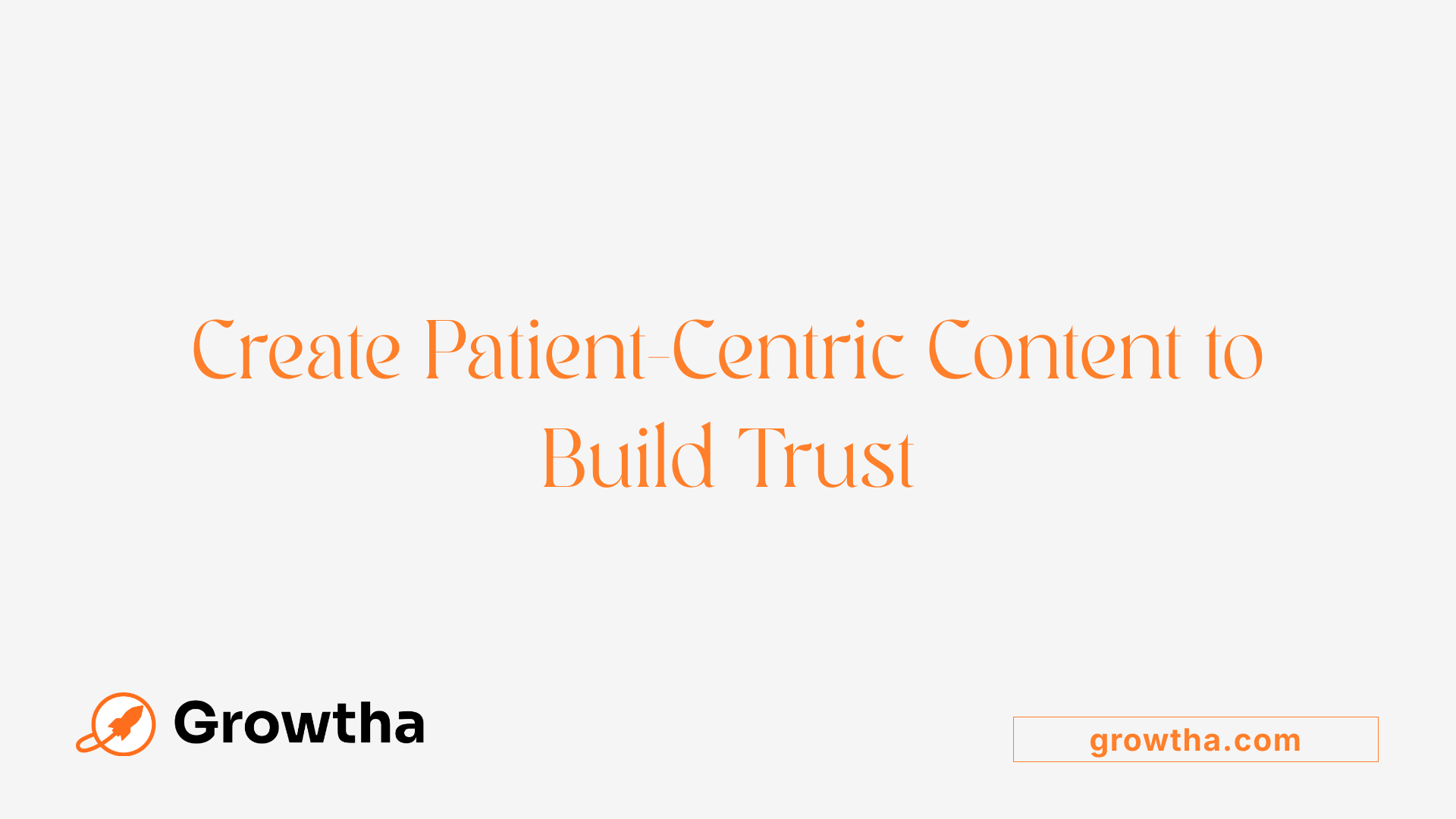SEO for Cardiologists: Targeting High-Value Keywords
Harnessing the Power of SEO to Elevate Cardiologists' Online Presence


SEO for Cardiologists: Targeting High-Value Keywords
The Essential Guide to High-Value Keyword Targeting in Healthcare SEO
In today’s digital age, having a well-optimized online presence is crucial for cardiology practices seeking to attract high-quality patients and stand out in a competitive market. Search Engine Optimization (SEO) tailored for cardiologists focuses on strategic keyword targeting, effective content creation, local search prominence, and technical website enhancements. This comprehensive approach ensures that practices are visible when prospective patients search for relevant cardiology services, leading to increased patient engagement, higher appointment rates, and long-term practice growth.
Understanding SEO Benefits for Cardiology Practices

What are the benefits of SEO for cardiology practices?
Implementing search engine optimization (SEO) strategies can significantly transform how cardiology practices connect with potential patients online. One primary advantage is enhancing online visibility. When a practice optimizes its website around relevant keywords such as “cardiologist near me” or “heart disease treatment,” it increases its chances of appearing higher in search engine results. This improved ranking makes it easier for local patients to discover the practice when they are searching for trusted cardiology services.
Beyond visibility, SEO plays a vital role in building credibility and trust. By consistently appearing on the first page of search results and earning positive reviews, a practice establishes itself as an authoritative and reputable source. Creating patient-focused, high-quality content that addresses common health concerns not only educates visitors but also boosts the site’s authority, helping the practice gain long-term recognition.
Cost-effectiveness is another major benefit. Unlike paid advertising such as Google Ads, SEO costs less over time by attracting organic traffic. Once a practice ranks well, it can maintain strong visibility with ongoing, strategic optimizations. This results in acquiring high-quality, targeted leads without the continual expense of paid campaigns.
Furthermore, SEO offers a sustained online presence that can outlast short-term marketing efforts. With continued content updates, backlink acquisition, and local SEO tactics—like optimizing Google Business Profiles—practices can outrank competitors and stay relevant within their community.
Overall, integrating comprehensive SEO strategies helps cardiology practices stand out in a crowded online landscape. It attracts new patients, enhances reputation, and provides a competitive edge that is crucial for long-term growth and success.
Strategic Keyword Research for Cardiologists

How can cardiologists target high-value keywords to improve their SEO strategy?
Cardiologists aiming to enhance their online presence should start with comprehensive keyword research. This process involves identifying search terms that potential patients are actively using when looking for cardiology services.
Using tools like Google Keyword Planner, SEMrush, or Ahrefs allows practices to discover high-volume, low-competition keywords that are relevant to their specialty. These keywords often include terms like “cardiologist near me,” “heart disease treatment,” or specific conditions such as “arrhythmia specialist.” Incorporating these into website content, meta descriptions, headers, and service pages helps improve visibility in local searches.
Long-tail keywords are particularly valuable. Phrases like “best cardiologist for hypertension in [city]” or “pediatric cardiology services in [location]” are specific and match patient search intent better. These keywords tend to have less competition and higher conversion rates, attracting highly targeted traffic.
It’s essential to monitor keyword performance continuously. Tools like Google Search Console provide insights into how keywords are ranking and which queries are driving traffic. Regularly updating the keyword strategy based on this data ensures the practice remains competitive and adapts to changing search patterns.
Optimizing website elements with strategic keywords, ensuring natural integration, and aligning content with user intent can significantly boost search rankings. Furthermore, maintaining technical SEO health—such as fast-loading pages, mobile responsiveness, and secure hosting—complements keyword efforts.
Finally, adhering to Google’s E-E-A-T (Experience, Expertise, Authority, Trustworthiness) guidelines enhances content credibility, encouraging higher rankings and patient trust. Overall, targeted keyword research and adaptation form the foundation of a successful SEO campaign for cardiologists looking to attract more local patients.
Implementing Local SEO to Capture Community Patients

What is the importance of local SEO for healthcare professionals?
Local SEO plays a crucial role for healthcare providers, especially cardiologists, because many patients start their search for medical services online within their community. When a practice optimizes its online presence for local searches, it becomes more visible to nearby patients actively looking for services such as 'cardiologist near me' or 'heart disease treatment.' Achieving high local search rankings through strategies like optimizing Google Business Profiles and ensuring consistent NAP (Name, Address, Phone number) details across directories improves the practice’s chances of appearing in local search results and Google Maps.
Additionally, creating location-specific website content, incorporating local keywords, and earning positive reviews from patients help establish credibility and trust within the community. These efforts make it easier for patients to find, choose, and engage with the practice. Overall, effective local SEO enhances visibility, increases patient inquiries, and drives sustained practice growth in targeted geographic areas.
How can healthcare practices measure the success of their SEO efforts?
Measuring the success of SEO strategies involves monitoring several performance indicators. First, practices should track organic website traffic using analytics tools like Google Analytics. An increase in this traffic suggests improved visibility in search engines.
Second, keyword rankings—particularly for local keywords—offer insight into how well the site is performing in search results. Online presence in Google’s Local Pack or Map Pack is also a vital metric, indicating prominence in local searches.
Conversion-related metrics such as patient inquiries, appointment requests, and contact form submissions reveal how traffic translates into actual patient engagement. Monitoring these conversions helps determine ROI.
Further, examining metrics like bounce rate, page load speed, and average session duration uncovers user experience issues affecting SEO. Reviews and backlinks indicators also reflect the practice’s online reputation and authority growth.
By regularly analyzing these variables through comprehensive reports, practices can make informed adjustments, ensuring continuous SEO performance enhancements.
Technical SEO Best Practices for Cardiology Websites

What SEO techniques can improve online visibility for a cardiology practice?
Enhancing your cardiology practice’s online presence requires a comprehensive approach to technical SEO. These strategies ensure that your website is not only easily discoverable by search engines but also provides a seamless experience for visitors.
One of the most important aspects is mobile responsiveness. With a majority of patients searching via smartphones, your website must adapt to different screen sizes. Fast load speeds are equally vital; slow websites lead to high bounce rates and lower rankings. Utilizing tools like Google PageSpeed Insights helps identify and fix speed issues.
Proper site architecture and the use of structured data, such as schema markup, can also make a big difference. Structured data helps search engines understand your content better, enabling the creation of rich snippets—informative results that display additional details like reviews, contact info, and procedures directly in the search results.
Fixing broken links and optimizing images are technical steps that improve user experience and crawlability. Broken links can frustrate users and harm SEO rankings, while optimized images load faster and enhance accessibility.
Ensuring your site is properly indexed involves submitting a sitemap to search engines and regularly monitoring your site’s indexing status. This guarantees that your practice’s pages appear correctly in search results.
Incorporating these practices results in a faster, more reliable website that appeals both to users and search engines—an essential foundation for successful SEO.
How do these SEO practices impact the visibility and credibility of a cardiology practice?
Implementing robust technical SEO strategies directly influences how easily patients find your practice online. Faster, mobile-friendly websites rank higher on Google and other search engines, increasing your practice’s visibility.
Rich snippets generated through schema markup can highlight your expertise, patient reviews, and services, making your listing stand out in search results. This not only attracts clicks but also builds credibility, reassuring potential patients of your authority and trustworthiness.
Fixing website issues and maintaining proper indexation prevent errors that could hide your pages from search engines. Consequently, your content consistently reaches prospective patients actively searching for cardiology services.
Ultimately, a technically sound website combined with targeted content fosters trust, enhances your online reputation, and encourages new patient inquiries. This integrated approach is essential for growing a competitive cardiology practice in the digital age.
Content Optimization and Quality Content Creation

Creating patient-centric content
Producing content that focuses on the needs and questions of patients is vital for effective healthcare SEO. This approach ensures that the information provided aligns with what potential patients are actively searching for, making the website a valuable resource. Patient-centric content includes clear explanations of conditions, treatments, and procedures, which helps in building trust and authority.
Additionally, content should be easy to understand, free of jargon, and optimized for both search engines and user experience. Including visuals, such as images or videos, can further clarify complex topics and make content more engaging.
Blogging about relevant health topics
Regularly updating a practice’s blog with articles on common health concerns, recent medical advances, or tips for maintaining heart health attracts organic traffic. Blog posts should incorporate relevant keywords naturally, helping the practice rank higher for specific search queries.
Blogs also serve as a platform to address frequently asked questions, dispel misconceptions, and demonstrate expertise. Creating content around trending health topics or seasonal concerns can also increase visibility and encourage sharing.
Using relevant keywords for content
Effective healthcare SEO hinges on strategic keyword integration. Keywords should be patient-focused, relevant, and specific to the practice’s services and location. Long-tail keywords, such as "best cardiologist in Dallas" or "symptoms of congestive heart failure," target high-intent searches, increasing the likelihood of converting visitors into patients.
Tools like Google Keyword Planner, SEMrush, or Ahrefs assist in identifying high-volume, low-competition keywords. Proper placement in titles, headers, meta descriptions, and throughout the content ensures that search engines understand and rank the pages appropriately.
Addressing patient questions
Content should be tailored to answer common patient inquiries comprehensively. FAQs, how-to guides, or explainer videos about procedures like echocardiograms or heart disease management help in addressing immediate patient concerns.
This not only improves the user experience but also enhances SEO by targeting voice search queries and natural language questions that patients are increasingly using.
Why is targeted content important for healthcare SEO success?
Targeted content is crucial because it addresses the specific needs and questions of different patient groups, boosting relevance and engagement. By providing accurate, credible, and compliant information, healthcare providers build trust and authority, which are essential in a regulated industry. Optimized targeted content increases search engine visibility, drawing in prospective patients searching for tailored health information. Moreover, personalized content across multiple channels fosters loyalty and long-term relationships, ultimately improving SEO performance and enhancing the organization’s reputation. This strategic focus on quality, relevance, and compliance ensures sustainable growth and better patient outcomes.
More about content creation for healthcare
Effective practices include thorough keyword research to identify what patients are searching for, creating high-quality, accessible content that emphasizes clarity and trustworthiness, and regularly updating content to reflect the latest medical guidelines and research. Ensuring website content is responsive, mobile-friendly, and easy to navigate complements content quality, making the site more attractive to both users and search engines. Leveraging multimedia, such as videos and infographics, can further enrich the content experience.
By continuously analyzing performance metrics like traffic sources, bounce rates, and conversion rates, practices can refine their content strategies to stay aligned with patient needs and search trends. Overall, strategic content creation is a cornerstone of successful SEO for cardiologists and healthcare practices alike, helping to attract top-quality patients while reinforcing the practice’s credibility.
Building Authority Through Backlinks and Reviews
Reputable backlinks from healthcare sources are essential to strengthening your practice’s online authority. When high-authority medical websites, health directories, and trusted industry blogs link to your site, search engines view your practice as credible and trustworthy. These backlinks serve as votes of confidence, improving your search rankings and increasing visibility to potential patients.
Online reviews and reputation management also play a pivotal role in local SEO. Positive patient feedback not only enhances your practice’s reputation but also influences local search results. Reviews appearing on Google My Business, Yelp, and other review platforms contribute to your local SEO rankings. The quantity and quality of reviews, along with regular engagement and responses, signal to search engines that your practice is trusted by patients.
Google reviews have a direct impact on local SEO because they influence your visibility in the Map Pack and local search results. Practices with numerous positive reviews and active management of their reputation are more likely to attract new patients. Encouraging satisfied patients to leave reviews and responding promptly to feedback helps build a strong online presence.
How can SEO initiatives help attract high-quality patients? SEO strategies boost your practice’s online visibility, helping it appear prominently when prospective patients search for relevant services like “cardiologist near me” or “heart disease treatment.” Optimizing web content with targeted keywords, maintaining a strong local SEO profile, and earning authoritative backlinks contribute to higher rankings. This, in turn, builds authority and trustworthiness, making it more likely that high-quality patients will choose your practice. SEO also provides measurable insights, enabling ongoing improvements.
What new content formats can support better SEO and patient engagement? Complementing traditional content, diverse formats like videos, FAQs, testimonials, and case studies significantly enhance engagement. Educational videos about procedures or heart health tips can increase dwell time and improve your site’s SEO. FAQs address common patient questions, optimizing for voice search and long-tail keywords. Testimonials and success stories foster trust and credibility. These multimedia formats not only support SEO by expanding keyword coverage and increasing sharing potential but also create a more engaging experience for visitors, encouraging them to convert into patients.
Overall, effective link building combined with positive reviews and varied content helps practices stand out in a competitive field. A consistent effort to maintain high-quality backlinks and reputation management fosters stronger search performance, attracts higher-quality inquiries, and positions your practice as a trusted leader in cardiology.
Monitoring and Analytics for Continuous SEO Improvement
How can healthcare practices measure the success of their SEO efforts?
Healthcare practices can gauge their SEO success by examining various performance indicators. These include organic traffic levels, keyword rankings, and appearances in local search packs. An increase in organic visitors indicates improved visibility, attracting more potential patients.
Equally important are conversion metrics such as inquiries, appointment bookings, and engagement with call-to-action buttons. These metrics reveal how well SEO efforts translate into real patient actions.
Utilizing tools like Google Analytics and Search Console is fundamental. Google Analytics provides insights into user behavior, bounce rates, and session durations, while Search Console helps monitor search performance, indexation, and site issues. Together, they give a comprehensive view of website health and effectiveness.
Tracking backlinks and reviews is also vital. High-quality inbound links and positive patient reviews boost your site’s authority and trustworthiness, further enhancing rankings.
Data from these sources should be analyzed regularly. Adjustments to keywords, content, or technical elements can be made based on this data, ensuring continuous improvement.
Healthcare practices should create detailed reports that combine these metrics. Regular review of these reports helps identify what’s working and what needs change, supporting data-driven decision making.
Tracking performance metrics to measure SEO results
| Metric | Description | Importance | How to Improve |
|---|---|---|---|
| Organic Traffic | Visitors arriving via search engines | Indicates visibility | Optimize keywords, content quality, and site structure |
| Keyword Rankings | Positions for targeted search terms | Reflects search engine relevance | Use relevant keywords, build backlinks |
| Local Pack Appearances | Visibility in local maps and search boxes | Vital for local practices | Claim and optimize Google My Business, local keywords |
| Conversion Rate | Percentage of visitors completing desired actions | Connects traffic to patient inquiries | Improve call-to-action, website usability |
| Bounce Rate | Visitors leaving after view only one page | Signals user experience and content relevance | Enhance content, speed, and mobile design |
| Website Speed | Load time of your site | Affects ranking and engagement | Optimize images, use caching, reduce scripts |
| Online Reviews and Reputation | Patient feedback on platforms | Impacts local search rankings | Encourage reviews, respond professionally |
Adjusting strategies based on data
When analytics reveal areas needing improvement, practices can adapt quickly. For example, if bounce rates are high on service pages, enhancing content relevance or clarity can help. If rankings for important keywords drop, revising on-page elements or building new backlinks may be necessary.
Continuous monitoring ensures that strategies remain aligned with changing search algorithms and patient behaviors. Regularly updating content, fixing technical issues, and expanding local keyword efforts can sustain and grow online visibility.
Reporting and performance metrics
An effective SEO campaign includes comprehensive reporting. Monthly reports should cover keyword positions, traffic data, user engagement metrics, and backlink profiles.
These reports not only justify investment but also guide future actions. Visual dashboards simplify complex data, making it accessible for team analysis.
By consistently tracking and reacting to these performance indicators, healthcare practices can maintain a competitive edge, attract more local patients, and ensure a steady return on SEO investments.
Integrating SEO into Overall Digital Marketing Strategy
Combining SEO with paid advertising and social media is a comprehensive approach that enhances a practice’s online presence. While organic SEO builds a sustainable and ongoing stream of targeted traffic, paid advertising like Google Ads delivers quick visibility, allowing practices to target specific keywords and local areas immediately. Integrating these channels ensures that therapies, services, and unique practice qualities are promoted effectively across multiple touchpoints.
Content marketing and patient education play a crucial role in elevating SEO efforts. By creating informative blog posts, videos, and FAQs tailored to common patient questions, practices not only improve their search rankings but also establish themselves as trustworthy authorities. This approach nurtures patient relationships, encourages engagement, and encourages sharing within the community.
Long-term branding and reputation building are achieved through consistent, quality content and positive online reviews. As patients see a practice’s expertise reflected in content and reputation, their trust grows, leading to increased patient loyalty and referrals. Over time, this steady focus on credibility helps the practice maintain high rankings and stand out from competitors.
Why is targeted content important for healthcare SEO success? Targeted content is crucial because it directly addresses the specific needs and questions of different patient segments, enhancing relevance and engagement. By providing accurate, credible, and compliant information, healthcare organizations build trust with their audience, which is vital in a regulated industry. Optimized targeted content improves search engine rankings, increasing visibility and attracting prospective patients searching for relevant health information. Additionally, personalized and accessible content across multiple channels ensures a seamless patient experience, fostering loyalty and long-term relationships. Ultimately, strategic targeted content not only boosts SEO performance but also enhances the organization’s authority, trustworthiness, and patient retention.
Maximizing Your Practice’s Potential with Targeted Healthcare SEO
Embracing SEO as a core component of your digital marketing strategy can dramatically elevate your cardiology practice’s online visibility and patient engagement. By focusing on high-value, patient-centric keywords, optimizing local search presence, and creating authoritative content, you can attract the high-quality patients your practice aims to serve. Continuous monitoring and refinement of your SEO efforts ensure sustained growth and a competitive edge in the ever-evolving digital healthcare landscape. Implementing best practices in technical SEO, local optimization, and content creation not only boosts your search rankings but also builds your practice’s reputation as a trusted leader in cardiology. Start today and unlock your practice’s full potential in the digital world.
References
- Local SEO for Cardiologists - Cardiology SEO Company
- SEO for Cardiologists - Red Castle Services
- Cardiology SEO Marketing Agency - Brenton Way
- Healthcare Keywords to Include in Your Website's Healthcare SEO
- SEO for Cardiologists - Golden Tide Consulting
- SEO for Cardiologists: Attract More Patients to Your Practice
- Top Marketing Strategies & Guide for Cardiologists







